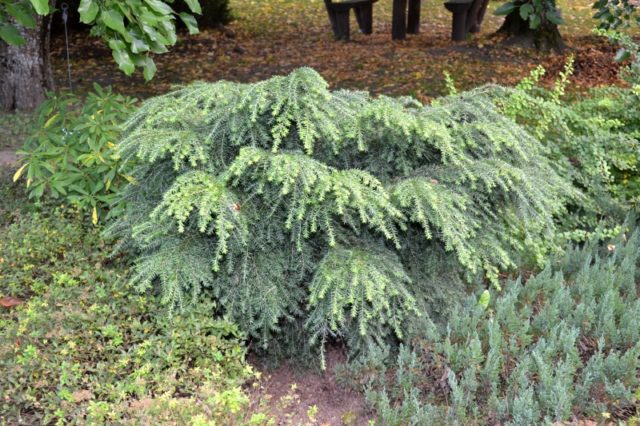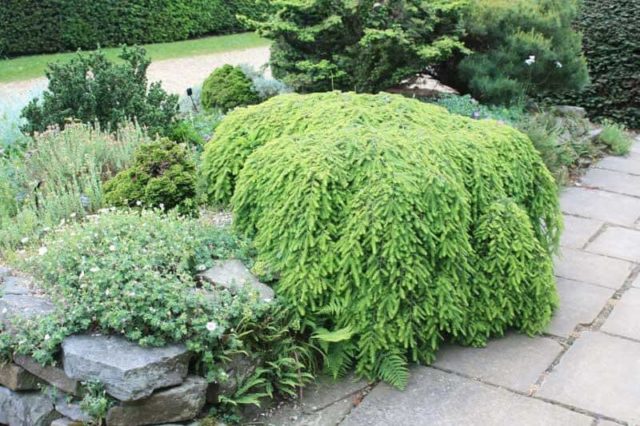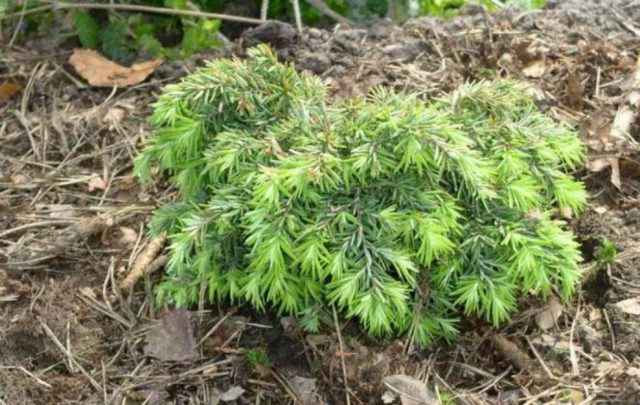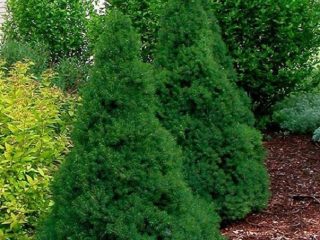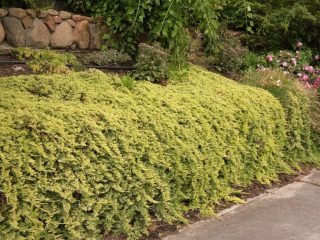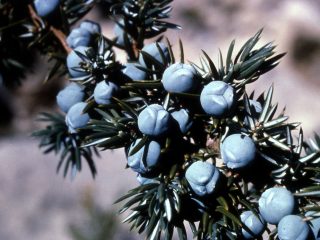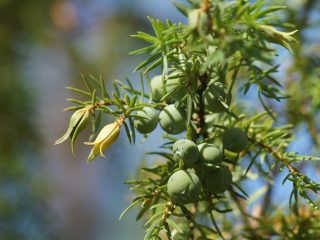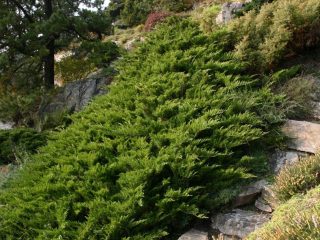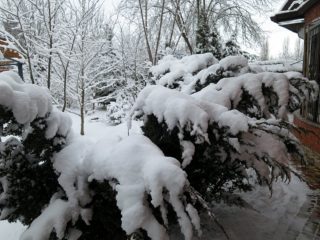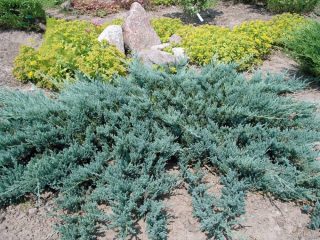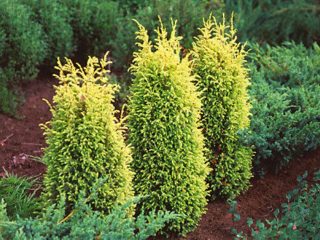Content
Some of the most popular plants for garden landscaping are evergreens and conifers, which can best create an atmosphere of comfort and relaxation. The Canadian hemlock Nana not only decorates the garden design with its luxurious appearance, but also provides the opportunity to breathe clean, fresh air. After all, like all coniferous trees, it is a natural air purifier.
Description of the Canadian hemlock Nana
An evergreen low plant up to 2 m tall with a wide cone-shaped crown is widespread in Western Europe. Nana's hemlock shoots hang down to the bottom, visually creating a cascade of greenery. As the tree ages, the smooth bark acquires a brown tint and deep furrows. Canadian hemlock has small, flat needles up to 1.5 cm long, located on the branches in a comb manner. The color of the needles is dark green and shiny. It is soft and pliable, very pleasant to the touch and appearance. The cones are small, up to 2.5 cm long, oval in shape, and grayish in color, appearing in the 2nd year of the plant’s life in the fall.
Canadian hemlock grows long and slowly.The annual growth in height is only 3 cm, in width - 5 cm. The culture is most common in North America and Europe, but today it can be observed in other parts of the world. The central regions of Russia are no exception, in particular the Moscow region, where Nana took pride of place on private plots. A detailed description and photo clearly demonstrate the Canadian hemlock Nana in all its modest, not flashy beauty, which can become an excellent background for other cultures.
Application in design
Canadian hemlock Nana is an ideal decoration for any garden and is used:
- for single landings;
- group compositions;
- creating hedges;
- sculptural trimming.
Even in small areas, the dwarf, compact crop of the Nana variety looks good. Its wide crown looks even more gorgeous against the background of flowering plants, and the hemlock transforms rocky areas beyond recognition. It demonstrates all the beauty of dark green needles and hanging crown in single plantings on the lawn.
Planting and caring for Canadian hemlock Nana
The main requirement for successfully growing Nana hemlock so that it develops according to its description is sufficient soil moisture. It can grow both in the sun and in the shade. Ephedra develops poorly on calcareous soils, but well on fertile, fresh soils. Nana does not tolerate dense soils with a lack of oxygen, so loosening in this case is also one of the important agricultural techniques. The main characteristics of a coniferous tree are:
- in frost resistance, maintaining air temperatures up to 29 degrees below zero;
- intolerance to gas pollution and air smoke;
- the need for protective shelter from strong winds;
- sensitivity to soil compaction;
- intolerance to drought and heat;
- ability to easily adapt to a haircut and maintain a curly shape.
Recommended timing
Hemlock Nana is planted in the spring or before the onset of autumn. In the first case - at the beginning of April, in the second - at the end of August. When planting in spring, the period is calculated so that at least 14 days remain before the onset of stable heat; in autumn - until stable snow cover, at least 1 month.
Site selection and soil preparation
The place for planting Canadian hemlock Nana should be protected from winds. They provide such protection to coniferous trees with the help of vertical gardening, trellises, gazebos or fences. Large deciduous trees will provide excellent protection for Canadian hemlock. The soil for planting hemlock Nana is prepared from a mixture of turf and foliage soil with the addition of sand 3 - 4 days before the day of planting.
Landing algorithm
- Dig planting holes measuring 70x80 cm with a distance between them of 1 - 1.5 m.
- On heavy soils, provide a drainage layer of gravel, sand or broken brick of at least 20 cm.
- Fertile soil is poured onto the drainage and the seedling is installed, making sure that the junction of the root and stem remains at ground level.
- The soil is compacted and watered abundantly.
Growing rules
Canadian hemlock does not tolerate transplantation well, so a permanent place on the site is initially selected for it.Adult plants are unpretentious, but young seedlings require special care. So, they must be protected from direct sunlight, frost, strong winds and drafts. In addition, coniferous species Nana:
- tolerates shading well;
- not at all afraid of frost;
- thrives in soils with high acidity and high humidity;
- It grows and develops normally in conditions of constant lack of sun: for the Canadian hemlock Nana, 5 sunny days are enough to delight the owner with its luxurious appearance.
Watering and fertilizing schedule
Watering is a mandatory agrotechnical practice required by Canadian hemlock. It is important to prevent the soil from drying out during the summer season. The minimum watering rate for an adult tree is 1 bucket per week, provided that the entire plant is regularly irrigated with a watering can or hose. During drought, the frequency of watering is increased by 2 - 3 times.
The first 2 - 3 years after planting, hemlock Nana does not require additional feeding, since the soil contains all the supply of nutrients necessary for active growth and development. In the future, hemlock Nana is fed annually in the spring with an organic solution or complex fertilizer for conifers. Mulching with humus preserves moisture in the soil and provides additional nutrition to the roots. Loosen the tree trunk circle shallowly - up to 10 cm.
Pruning rules
Proper planting and subsequent care of Nana hemlock consists of regular pruning.It is carried out in the summer, forming a three-dimensional figure or giving the crown a spherical, cone-shaped, square shape. As the shoots grow, corrective pruning is performed, removing protruding, unnecessary branches. The plant tolerates formative pruning well and retains its shape for a long time. In the first 3 years, the perennial does not need pruning, as it grows very slowly.
Preparing for winter
Nana hemlocks begin preparing for winter in early November, when the first frosts have already made themselves known. The soil around the tree trunk is mulched, and young seedlings are covered with spruce branches or non-woven material. The same procedure for preparing for winter is carried out for adult breeds in regions where the air temperature drops below 29 degrees below zero. The shelter protects not only from cold weather, but also from bright sunlight in the spring, which hemlock also does not tolerate well. If the shelter of an adult plant was not carried out for the winter, then at the end of February and in March the trees are protected from the sun and burning.
Pests and diseases
The Canadian hemlock Nana is resistant to diseases and pests when provided with optimal care. However, young or weakened trees are often inhabited by:
- spider mite;
- scale insect;
- moth butterfly;
- hemlock mite.
All of these pests are dangerous not only because they eat young needles, but also transmit infectious diseases. They are combated with the help of chemicals that can be used for hemlock. To prevent the appearance of pests and diseases, the tree must be regularly sprayed with water from a hose and damaged shoots must be removed. Of the diseases, hemlock most often suffers from root rot, caused by waterlogging and lack of fresh air.Only favorable conditions for the life of coniferous species can eliminate the risk of developing this disease.
Like all garden trees, Canadian hemlock is often attacked by rodents and hares, which feed on young roots, branches and bark. Special traps and nets are placed against them, and mulching is carried out with plants, the smell of which repels the animals.
Conclusion
Canadian hemlock Nana is excellent for garden landscaping. Thanks to its winter hardiness, shade tolerance and slow growth, it thrives in places where other perennials cannot grow, decorating them with its original appearance and shape.
